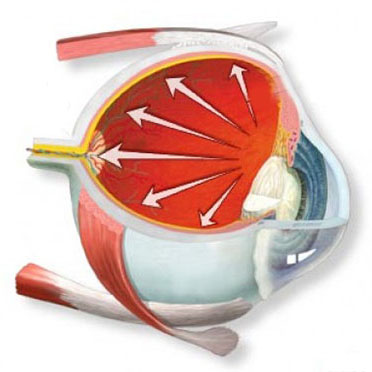Factors influencing on the control of intraocular pressure after the trabeculectomy in Pinar del Río
Keywords:
INTRAOCULAR PRESSURE, TRABECULECTOMY, GLAUCOMA.Abstract
Introduction: trabeculectomy is still the most commonly used incision surgery to control the intraocular pressure in patients suffering from glaucoma.
Objective: to describe the factors influencing on the control of intraocular pressure after the trabeculectomy.
Methods: a descriptive, longitudinal-prospective study was carried out in 91 patients undergoing trabeculectomy at Abel Santamaria Cuadrado General Teaching Hospital from 2012 to 2015, where the control of intraocular pressure was described according to the variables that could influence on this result, applying descriptive statistics and chi-square test.
Results: the cases with adequate control presented no ocular antecedents (88.6%), moderate disease stage (65.7%), previous intraocular pressure ≤ 30 mmHg (72.9%) and absence of postoperative complications (84. 3 %). Patients with relatively adequate or inadequate control where male gender predominated (92.9% and 57.1% respectively), non-white skin patients (85.7%), history of trabeculectomy (57.1%), advanced damage and previous intraocular pressure> 30 mmHg (85.7%).
Conclusion: among the factors influencing on the adequate control of the intraocular pressure were: negative ocular history, previous intraocular pressure less than or equal to 30 mmHg, and absence of postoperative complications, whereas for a relatively adequate or inadequate control influenced on male patients, non-white skin, antecedent of previous trabeculectomy, advanced damage provoked by glaucoma and previous intraocular pressure greater than 30 mmHg.
Downloads
References
1. Castañeda Díez R, Jiménez Román J, Iriarte Barbosa MJ. Concepto de sospecha de glaucoma de ángulo abierto: definición, diagnóstico y tratamiento. Rev Mex Oftalmol [Internet]. 2014 [Citado 2015 Dic 22]; 88(4): [Aprox. 7p.]. Disponible en: http://www.sciencedirect.com/science/article/pii/S0187451914000304
2. Riordan-Eva P, Emmett T, Cunningham Jr. Vaughan & Asbury's General Ophthalmology. 18th ed. USA: The McGraw-Hill Companies; 2012.
3. American Academy of Ophthalmology. Basic and Clinical Science Course: Glaucoma. 2014-2015. San Francisco: American Academy of Ophthalmology; 2014.
4. Fernández Argones L, Piloto Díaz I, Domínguez Randulfe M. Glaucoma Temas quirúrgicos. La Habana: Ed. Ciencias Médicas; 2013.
5. Urcelay JL, Fernández-Vila PC, Monsalve B. Trabeculectomía. Rev Annals d´Oftalm [Internet]. 2015 [Citado 2016 Ene 12]; 23(4): [Aprox. 9p.]. Disponible en: http://www.annalsoftalmologia.com/articulos/a18621/04_2_dr-urcelay.pdf
6. Goñi Foncillas FJ, Suárez Jáuregui J. Diagnóstico y manejo de las complicaciones en la cirugía de glaucoma, posoperatorio reciente. Rev Annals d´Oftalm [Internet]. 2015 [Citado 2016 Feb 17]; 23(4): [Aprox. 6p.]. Disponible en: http://www.annalsoftalmologia.com/articulos/a18637/04_7-1_dr-goni.pdf
7. Anand N. Intraoperative use and needling bleb revisión with mitomycin C. Rev Annals d´Oftalm [Internet]. 2015 [Citado 2016 Feb 22]; 23(4): [Aprox. 6p.]. Disponible en: http://www.annalsoftalmologia.com/articulos/a18627/04_5-1_dra-anand.pdf
8. Fernández S, Pardiñas N, Laliena JL, Pablo L, Díaz S. Resultados tensionales tras trabeculectomía a largo plazo. Estudio comparativo entre tipos de glaucoma y tratamiento médico previo. Arch Soc Esp Oftalmol [Internet]. 2009 [Citado 2016 Mar 7]; 84(7): [Aprox. 3p.]. Disponible en: http://scielo.isciii.es/scielo.php?script=sci_arttext&pid=S0365-66912009000700005
9. Vega Vega CE. Trabeculectomía: factores asociados al éxito quirúrgico en pacientes con glaucoma atendidos en el Hospital Nacional Arzobispo Loayza entre los años 2009-2012. [Tesis]. Lima: Universidad Nacional Mayor de San Marcos [Internet]. 2013. [Citado 2016 May 15]. Disponible en: http://ateneo.unmsm.edu.pe/ateneo/bitstream/123456789/2846/1/Vega_Vega_Carmen_Edith_2013.pdf
10. Fernández L, Padilla CM, Obret I, Piloto I, Fumero FY. Factores pronósticos del fallo de la trabeculectomía en una población de Cuba. Arch Soc Esp Oft [Internet]. January 2016 [Citado 2016 Ago 13]; 91(1). Disponible en: http://dx.doi.org/10.1016/j.oftale.2015.12.005.
11. Rodríguez Agirretxe I. Estudio de la trabeculectomía experimental mediante implante de PLGA como dispositivo de liberación controlada de fármacos [Tesis Doctoral]. Leioa: Euskal Herriko Unibertsitatea [Internet]. 2012. [Citado 2016 Ago 13]. Disponible en: https://addi.ehu.es/bitstream/10810/11294/1/TESIS%20I%C3%91AKI%20RODR%C3%8DGUEZ%20AGIRRETXE.pdf
12. Cruz Almanza A, Luna- Martínez I, Brechtel Bindel MK. Correlación entre daño perimétrico relacionado con glaucoma y espesor de la capa de fibras nerviosas retinianas medido por tomografía óptica coherente. Rev Mex Oftalmol [Internet]. 2014 [Citado 2016 Ago 22]; 88(4): [Aprox.6p.]. Disponible en: http://www.sciencedirect.com/science/article/pii/S0187451914000687
13. Silvina Brouet M. Valoración de la presión intraocular a largo plazo en pacientes con glaucoma primario de ángulo abierto a los cuales se le realizó la técnica trabeculectomía. [Tesis]. Rosario: Universidad Abierta Interamericana; 2014. [Citado 2016 Sep 16]. Disponible en: http://imgbiblio.vaneduc.edu.ar/fulltext/files/TC116663.pdf

Published
How to Cite
Issue
Section
License
Authors who have publications with this journal agree to the following terms: Authors will retain their copyrights and grant the journal the right of first publication of their work, which will be publication of their work, which will be simultaneously subject to the Creative Commons Attribution License (CC-BY-NC 4.0) that allows third parties to share the work as long as its author and first publication in this journal are indicated.
Authors may adopt other non-exclusive license agreements for distribution of the published version of the work (e.g.: deposit it in an institutional telematic archive or publish it in a volume). Likewise, and according to the recommendations of the Medical Sciences Editorial (ECIMED), authors must declare in each article their contribution according to the CRediT taxonomy (contributor roles). This taxonomy includes 14 roles, which can be used to represent the tasks typically performed by contributors in scientific academic production. It should be consulted in monograph) whenever initial publication in this journal is indicated. Authors are allowed and encouraged to disseminate their work through the Internet (e.g., in institutional telematic archives or on their web page) before and during the submission process, which may produce interesting exchanges and increase citations of the published work. (See The effect of open access). https://casrai.org/credit/


